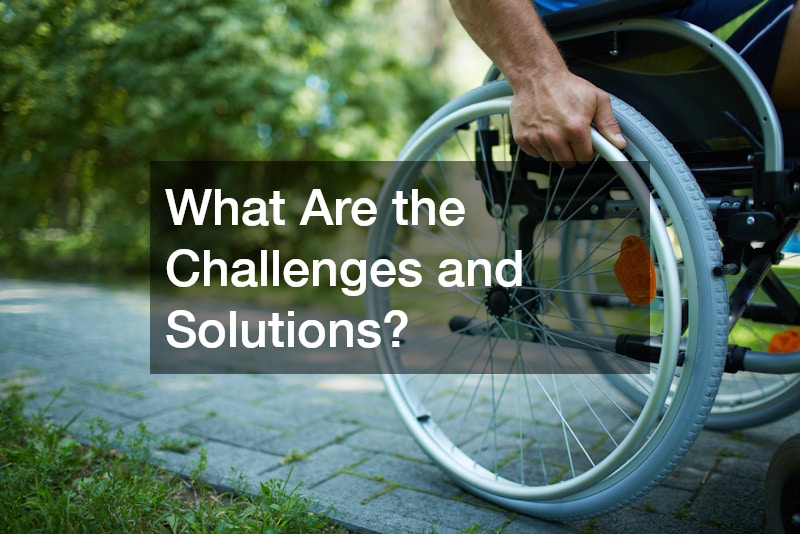Local disability living services play a significant role in enhancing the lives of individuals with disabilities. A local disability living service offers tailored support and resources that can greatly improve daily living and overall well-being.
What is a Local Disability Living Service?
Understanding the Basics
Local disability living services are community-based programs designed to assist individuals with disabilities in managing their daily lives. They create a supportive environment that promotes independence and inclusion for people who face various challenges due to disabilities.
These services serve as a bridge between individuals with disabilities and the resources they need to thrive. Operating at the community level, they are uniquely equipped to cater to the specific needs of local residents.
Through education, advocacy, and direct support, these services aim to empower individuals and their families. They help mitigate barriers faced in daily living, ensuring a more accessible and equitable quality of life.
Types of Services Offered
A wide range of services is offered through local disability living services, each tailored to meet the varied needs of individuals. These include assistance with self-care activities, ensuring personal hygiene and health management are well-maintained.
Mobility support is another key service, offering solutions such as transportation or access to mobility devices. This ensures that individuals can move freely and engage with their community.
Home modifications are also a critical component, with services that assess and alter living spaces to enhance accessibility, such as ramp installations and stairlifts. These modifications are vital for fostering an independent lifestyle at home.
How Can It Benefit Individuals with Disabilities?
Enhanced Quality of Life
Local disability living services significantly enhance the quality of life by promoting greater independence. This independence is achieved through personalized support plans that cater to the individual’s specific needs.
By improving accessibility in various aspects of life, from transportation to home living, these services help remove barriers that hinder day-to-day activities. As a result, individuals are empowered to lead more fulfilling lives.
The comprehensive support offered encourages participation in community activities, which fosters a sense of belonging and purpose. This engagement is critical in improving mental health and overall satisfaction.
Social and Emotional Support
Beyond physical and practical aid, local disability living services play a crucial role in providing social and emotional support. They offer opportunities for individuals to connect with peers, fostering a supportive community experience.
Engagement in social activities and support groups creates a network of understanding and friendship. This reduces feelings of isolation and promotes mental well-being among service users.
The emotional benefits of these interactions are substantial, offering both companionship and guidance. This reinforces the importance of social integration as a component of living independently.
How to Access These Services?
Finding Local Providers
Locating a local disability living service provider begins with researching community resources and agencies. Many local nonprofits and government departments maintain directories of available services and providers.
Online searches and community centers can also provide valuable information on service options in one’s vicinity. It’s important to choose a provider that aligns well with an individual’s unique needs and preferences.
Networking with other individuals with disabilities or their families can also provide recommendations and insights into reputable providers. This approach helps in understanding the quality of support offered by different organizations.
Eligibility and Enrollment Process
Eligibility for accessing local disability living services often depends on several criteria, including the type and severity of the disability. Prospective users should contact providers to inquire about specific eligibility requirements.
The enrollment process typically involves an assessment of the individual’s needs, which helps tailor the service package. This assessment ensures that the support provided is both effective and efficient.
Documentation and health records are often required to complete registration. Service providers can offer assistance with the paperwork and guide applicants through the enrollment process smoothly.
What are the Costs Involved?
Understanding Service Fees
The costs associated with disability services can vary widely depending on the type and level of support required. Some services may be covered by government programs, while others might require out-of-pocket payments.
Individuals and families must discuss fees with the provider to understand how costs will be structured. Transparency in pricing helps avoid unexpected expenses and ensures budget planning is effective.
Some organizations offer a sliding scale fee structure based on income, which can make services more affordable. It’s important to explore all financial arrangements that can aid in managing the costs involved.
Financial Assistance Options
Various financial assistance options are available to help cover the costs of local disability living services. Government programs, such as Medicaid or disability benefits, are common sources of funding support.
Additionally, many service providers offer scholarships or grants as part of their assistance repertoire. These options can significantly alleviate the financial burden for those who qualify.
It’s beneficial to consult with a social worker or financial advisor who can guide individuals through the process of obtaining financial aid. This ensures that all potential options are explored and utilized effectively.
What Are the Challenges and Solutions?
Common Obstacles Faced
Despite their benefits, there are several challenges faced by clients accessing local disability living services. Limited availability of services in rural areas is one barrier that can prevent individuals from receiving necessary support.
Additionally, navigating the bureaucracy involved in accessing these services can be daunting for many users. This complexity often deters individuals from pursuing the support they need.
Strategies to Overcome Challenges
To overcome these challenges, increasing outreach and advocacy in underserved areas is crucial. This can be achieved by leveraging technology and partnerships with other community organizations to extend service reach.
Streamlining the enrollment and service access processes can help reduce bureaucratic hurdles. Efforts to simplify forms and provide personalized assistance during registration can make a significant impact.


